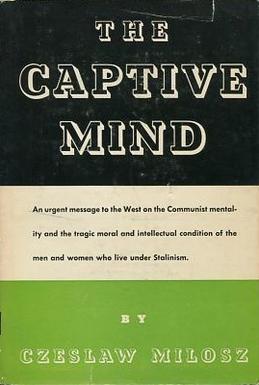Tom Holland, in his book Dominion, The making of the Western Mind, identifies the “trace elements” of Christianity in the woke world. The example he used was the intersectional feminists in the #MeToo movement offering white feminists the chance to “acknowledge their own entitlement, to confess their sins and to be granted absolution”.
But the problem with identity politics as a secular religion is precisely its failure to allow for absolution. The faith that Saad espouses is utterly bleak, even cloaked as it is in words of love. It utterly fails to allow for redemption, and its most direct religious antecedent is found in Calvinist predestination.
Under this doctrine, God has predetermined whether you are damned or elect. From the second that the right sperm hit it lucky with the most fecund egg, your place in the woke hierarchy was decided. In the modern progressive world, informed by intersectional feminists, it does not matter what you say or do, the only defining factor in your state of grace is your skin, gender and sexuality.
This is a profoundly depressing outlook for three main reasons. The first is the essential nihilism in the creed. Your intent? Irrelevant. Your deeds? Likewise. The sum of your experience, desires, longings, beliefs? Your humanity itself? Nah, not relevant.
The second dispiriting message is that the problems its aims to address are insoluble. White people are racist by their nature, and inherently incapable of seeing their own racism or addressing it. Men are misogynists, by default, witting or unwitting bulwarks of the patriarchy. If they don’t believe they are individually at fault they are in denial. And if they try to say, actually, I’m not sure the patriarchy exists, they are mansplaining misogynist bastards. This is the politics of perpetual antagonism, of a kind of bleak acceptance that all relationships between different categories of human are necessarily fractious.
[…]
The third problem with Puritan wokeness is that it [has] sinister echoes in the history of predestination. When the creed reached its zenith in the seventeenth century, the logical hole at its centre became insanely obvious. If it does not matter to God how you behave, because your salvation was pre-determined at birth, why not behave however the hell you want to?
Antonia Senior, “Identity politics is Christianity without the redemption”, UnHerd, 2020-01-20.
February 25, 2025
QotD: Identity politics as a secular religion
February 18, 2025
QotD: The soft sexism of low expectations
If a woman has spent her life marinating in the left-wing feminist subculture, a few things are highly likely to be true:
- She’s been told she’s great — fabulous! — just the way she is.
- She’s been taught to dismiss all push-back as misogynistic.
- She’s been assured that she’s entitled to success — and that any failures to achieve said success are the fault of men.
- She’s been trained to demand that these dastardly men — who are totes holding her back — kindly step aside and let her take the trophy — whether she’s actually earned it or not.
You might think I’m being unfair here, but frankly? I don’t agree. Given all the stuff I’ve read in the news for the past decade plus, I believe I’m right on the money.
Everywhere I look, I see illustrations of all four of the above bullet points. I hate to keep harping on the fat acceptance movement, but really: isn’t that a textbook example of point number one? Go ahead, ladies: eff those unrealistic beauty standards and rock on with your 300 pound selves. Yas, queen, slay! (And don’t worry that you can’t make it up a single flight of stairs without getting winded. The negative impacts of extreme obesity are way over-stated, amirite?)
Then there are all the times leftists of the distaff persuasion have thrown down the poor-me-I’m-being-harassed-by-meanie-sexist-men card each time they start losing an online argument. To be sure, in the absolute dumpster fire that is internet discourse, such women probably do get burned with the occasional “die, bitch!” PM or email. But as I noted on my fan blog, men get that crap too — and oddly, I don’t see them whining about it nearly as often. (Probably because crying doesn’t work for men. Only women get picked up by the waaaaaambulance.)
And just to hit on bullets three and four: everywhere I look, I see leftists justifying moves to ease standards to give vag a hand up. Just last month, for example, it was reported that Oxford is considering removing Homer and Virgil from a foundational classics course due to “attainment gaps between male and female candidates”. Don’t buckle down and study your Latin and Greek, dears. We’ll remove that pesky obstacle for you. And oh my great and fluffy Lord, I can’t even count the number of times I’ve heard feminists complain about the academic weeding that goes on in engineering or computer science — because apparently, advanced math is oppressive and patriarchal. As a woman who numbers pretty good — indeed, I even teach that stuff for a living! — I headdesk so hard whenever I hear this BS that I’m surprised my skull is still intact.
Where does all this anal-smoke-blowing lead? When you’re told constantly that you should get prizes simply for being a good little girl — as leftist women are — the result is predictable: you stop developing. If you’re already Ms. Polly Perfect, well — that obviates the need for critical self-examination and the consequent moves towards self-improvement. If your naysayers are all dismissible as “women-hating men bitter over the loss of their privilege” (or as women suffering from “internalized misogyny”), then your arguments are almost certainly untested and malformed. And if people have always been clearing the road for you and shielding you from any real challenges, you’re no doubt much stupider than your competition — and much weaker.
Stephanie S., “Prizes for Good Little Girls Syndrome”, Conservative Thoughts, 2020-03-07.
December 2, 2024
QotD: Intersectionality on campus
… intersectionality’s intellectual flaws translate into moral shortcomings. Importantly, it is blind to forms of harm that occur within identity groups. For a black woman facing discrimination from a white man, intersectionality is great. But a gay woman sexually assaulted by another gay woman, or a black boy teased by another black boy for “acting white”, or a Muslim girl whose mother has forced her to wear the hijab will find that intersectionality has no space for their experiences. It certainly does not recognize instances in which the arrow of harm runs in the “wrong” direction — a black man committing an antisemitic hate crime, for instance. The more popular intersectionality becomes, the less we should expect to hear these sorts of issues discussed in public.
Perhaps the most pernicious consequence of intersectionality, however, is its effect on the culture of elite college campuses. Some claims about “campuses-gone-crazy” are surely overblown. For instance, judging from my experience at Columbia, nobody believes there are 63 genders, and hardly anyone loves Soviet-style communism. (That said, the few communists on campus tend to despise intersectionality with an unusual passion.) But one thing is certainly not exaggerated: intersectionality dominates the day-to-day culture. It operates as a master formula by which social status is doled out. Being black and queer is better than just being black or queer, being Muslim and gender non-binary is better than being either one on its own, and so forth. By “better”, I mean that people are more excited to meet you, you’re spoken of more highly behind your back, and your friends enjoy an elevated social status for being associated with you.
In this way, intersectionality creates a perverse social incentive structure. If you’re cis, straight, and white, you start at the bottom of the social hierarchy — especially if you’re a man, but also if you’re a woman. For such students, there is a strong incentive to create an identity that will help them attain a modicum of status. Some do this by becoming gender non-binary; others do it by experimenting with their sexuality under the catch-all label “queer”. In part, this is healthy college-aged exploration — finding oneself, as it were. But much of it amounts to needless confusion and pain imposed on hapless young people by the bizarre tenets of a new faith.
Coleman Hughes, “Reflections on Intersectionality”, Quillette, 2020-01-13.
September 18, 2024
Canucks. In. Space – “racist, exploitative, elitist, and environmentally destructive”
In the National Post, Tristin Hopper‘s First Reading on a recently commissioned report for the Canadian Armed Forces on space exploration from an intersectional feminist viewpoint:
As Canada prepares to send an astronaut on the first manned moon mission in more than 50 years, its own military has commissioned a $32,250 report on how space exploration may actually be “racist, exploitative, elitist, and environmentally destructive”.
The 48-page report, entitled Hidden Harms: Human (In)security in Outer Space, concludes that human usage of space is currently “masculine, militarized and state-based”.
The authors also bemoan a space exploration field that is beholden to colonial concepts such as “technospeak” and “expertise”, and which doesn’t give appropriate weight to “spirituality, astrology, and cosmology, the last of which views celestial bodies in space as animated beings and not mere objects”.
As such, the report concludes that space will continue to be a realm of “hidden violence” against the world’s marginalized until “gender, race, class, ability, and sexuality” can be put at “the centre” of how decisions are made in the cosmos.
“Leadership is needed to normalize inclusion of different perspectives,” reads a conclusion.
The report has very little positive to say about the current state of human space exploration or space technology.
The whole endeavour is criticized as “technology-biased” because it fails to consider “gendered effects”. It’s “geography-biased”, because it doesn’t include equal participation from poorer countries.
It “normalize(s) violence and exploitation” by using language that depicts “outer space as a hostile and desolate environment that is unpeopled/inhuman and controlled so that it can provide an extractable resource”.
The construction of launch pads, satellite receivers and other ground infrastructure causes “disproportionate harm to Indigenous communities by severing their connection to ancestral lands”.
The report is also deeply critical of the fact that space is disproportionately inhabited by able-bodied males from wealthy countries. “Existing approaches are ahistorical and thus invisibilize diverse stakeholders and voices,” it reads.
Hidden Harms contains little to no discussion of the technical aspects of space exploration or technology. The word “rocket”, for instance, appears only once in a footnote in relation to how a falling rocket stage could hurt Inuit people. The word “orbit” appears in the text just once, when referencing how states could impose extraterrestrial harm by “permanently damaging objects on orbit”.
Nevertheless, the report is clear that all of these technical considerations should become secondary to “intersectional, decolonial, and humanitarian perspectives”.
“We must make space for the unfamiliar and the uncomfortable,” it reads.
It’s hardly surprising that an “intersectional feminist” view of space exploration would be harshly negative — what is surprising is that the Canadian Armed Forces paid to have this intellectual drivel written. A bit over $30k isn’t even a rounding error for the federal government, but as an indicator of just how federal bureaucrats are spending their departmental budgets it does seem to indicate that there’s a lot of fat in those budget numbers.
May 5, 2024
QotD: The aims of the intersectional left
Every now and again, it’s worth thinking about what the intersectional left’s ultimate endgame really is — and here it strikes me as both useful and fair to extrapolate from Kendi’s project. They seem not to genuinely believe in liberalism, liberal democracy, or persuasion. They have no clear foundational devotion to individual rights or freedom of speech. Rather, the ultimate aim seems to be running the entire country by fiat to purge it of racism (and every other intersectional “-ism” and “-phobia”, while they’re at it). And they demand “disciplinary tools” by unelected bodies to enforce “a radical reorientation of our consciousness”. There is a word for this kind of politics and this kind of theory when it is fully and completely realized, and it is totalitarian.
Andrew Sullivan, “A Glimpse at the Intersectional Left’s Political Endgame”, New York Magazine, 2019-11-15.
February 7, 2024
January 11, 2024
The Canadian Armed Forces believe “that they – and the country they serve – are irredeemably racist and oppressive”
The official journal of the Canadian Armed Forces has a … woke … view of themselves and the nation:
… the latest edition — which was just posted online — contains little to no mention of strategy, geopolitics or the avalanche of contemporary problems facing the Canadian Armed Forces. There’s not a single reference to the recruiting crisis, which has left vacancies of up to 40 per cent in some departments. No mention of the plummeting maintenance standards that recently prompted the commander of the Royal Canadian Navy to declare that his fleet was in a “storm” with no end in sight. No discussion of why Canada is slashing its military budget even as its peer countries do the exact opposite.
Instead — in a signal of just how far the Canadian Armed Forces has embraced far-left “anti-racist” ideology — the entire issue is devoted to how the Canadian military is a racist, patriarchal den of colonialist oppression that needs to be torn down and remade from scratch.
After devoting extended paragraphs to each cultural infraction, Eichler concludes that the Canadian Armed Forces must be remade via an “anti-oppression framework” of “feminist, decolonial, critical race, queer, critical disability, and critical political economy theories”.
Eichler notes this is “not an easy task, but a necessary one if DND/CAF wants to move the yardstick on culture change.”
Another feature, by York University psychotherapist Tammy George, frames the Canadian Armed Forces as being poisoned by “institutional whiteness”.
“In order for meaningful, sustained culture change to occur, there must be a recognition by the white majority of the way in which whiteness organizes lives,” she writes.
Leigh Spanner, a feminist postdoctoral research fellow, wrote that the CAF’s system of supporting military families was anti-feminist and patriarchal.
Ash Grover, a researcher in “feminist anti-militarism”, argues that the military might have fewer instances of post-traumatic stress disorder if they paid closer attention to “anti-oppressive theory” and how “acts of ‘othering’ can result in responses typically associated with post-traumatic stress disorder”.
January 4, 2024
QotD: Displays of intelligence as a status good
… noblemen in France (in the rest of Europe too, but France’s old kingdom was special for how wide the disparity was) were used to being by far the richest in their surroundings. And they were used to the peasants being less than dirt under their feet. Or their chariot wheels.
And then that changed, in what is a cultural eye-blink. Forget the crazy slogan. Humans don’t like change. Particularly they hate change that challenges their status. Unable to actually increase their net worth (within the prescribed realms in which noblemen could do such) or stop spending, the nobility instead went for displays of wealth. Big and extravagant ones. And the wigs were … quite, quite insane.
So what does that have to do with Facebook?
For a few generations, since the left captured the academia, entertainment and the industrial-news complex, aka, the opinion makers, to be a leftist has been synonymous with being smart.
And being smart, since the renaissance, but definitely since the world wars has been the greatest social “good” there is.
No, I’m not saying the left was smart. Increasingly, most of them weren’t, because as it became a matter of social display, the easily led started imitating it.
No, I’m saying that to parrot leftist ideas was to be considered smart. Partly because of the left’s conceit that Marxism was “scientific” there has always been, attached to the modern left the idea that to believe as they do is “rational” and “smart” and that their opponents are stupid.
Not only did they hold onto this while their ideas were proven wrong by reality over and over again, but having captured academia, they pushed leftist ideas as synonymous with being educated. I mean, if you’d attended an elite school, you received these ideas, and the way to signal you’ve attended the school is to parrot it. Thus leftism became the old school tie (mostly around the neck of our economy, but never mind.)
While they had full control of the media, be it entertainment or informational, they could reinforce the message, as well as revile anyone who challenged them as stupid, wrong and illiterate, and GET AWAY WITH IT.
With intelligence being the highest status-good in our society, the left had secure status. Forever, they thought.
The change has been very rapid. The fall of the USSR and [the rise of] talk radio were the beginning, and since the internet took off, they’ve been trying to hold on to the tail of the comet, as it streaks away from them.
I’ve said it before and I maintain it. If Mr. Obama had been president in a country where the information tech was the same as in the 30s, all his failures would have been hidden, and people would believe him a staggering genius, instead of the little man who wasn’t there. Because that’s how the industrial-media complex presented him.
And then … And then they went all in for Hillary! They were “With her” 300%.
Unbelievably, it didn’t work.
I think they’d suspected, before, that things had changed. But they could still tell themselves stories, dismiss the opposition, preen on having all the power. And then … it failed.
Since then they’ve been running scared with social insecurity. They display their “brilliance” for all the world, and it didn’t work? Oh. Must signal louder, larger, crazier.
All the “Wokeness” over everything possible (and mostly imaginary) in the last few years? That’s social signaling by a social group losing power and trying to regain it.
The less it works, the more extravagant it will get. I am in premonitory awe over what will happen should Trump beat the margin of fraud in 2020. You thought the Democratic Socialist meeting was funny? You ain’t seen nothing yet. They won’t be able to open their mouths without announcing “point of personal privilege” and their pronouns, and interrupting each other with ever finer intersectional victimhood.
If you think having a woman who won an SF award malign the person the award is named after with a bunch of ahistorical nonsense, and seeing the institution cave within days was peak wokeness, you’re deluding yourself.
Soon and very soon the “Wokeness” displays will be the equivalent of having live birds in your hair.
Because in their subconscious, if they just signal loud enough they’ll regain their status as “smart” and “educated”.
Meanwhile, we’ll be buying popcorn stocks and saying “Is that a ship on your head, or are you that insecure?”
Sarah Hoyt, “Is That A Ship On Your Head?”, Libertarian Enterprise, 2019-09-01.
December 13, 2023
December 3, 2023
July 21, 2023
“Gender refers to the characteristics of women, men, girls and boys that are socially constructed”
David Craig kindly relays the official word from the World Health Organization to us benighted peons who haven’t yet learned about recent scientific discoveries about sex and gender:
For readers confused about the difference between gender and sex, I have wonderful news. The admired and respected World Health Organization (WHO) has helpfully come up with an explanation. There may be some cynics who feel the extract below is nonsensical, woke gobbledygook, but I subscribe to the officially imposed mantra that there are close to a hundred genders. Otherwise I would probably be banned and cancelled and deplatformed and debanked etc etc.
But cynics should be careful what to say, write or tweet as anyone who contradicts what the WHO decrees would be guilty of spreading medical disinformation thus risking social media excommunication. Moreover, when the British government inevitably signs up to the legally binding new WHO treaty in May 2024, about which TCW has warned on several occasions, for example here, anyone disagreeing with WHO edicts might be committing a criminal offence.
Anyway, here is the WHO’s explanation of the difference between gender and sex.
Gender refers to the characteristics of women, men, girls and boys that are socially constructed. This includes norms, behaviours and roles associated with being a woman, man, girl or boy, as well as relationships with each other. As a social construct, gender varies from society to society and can change over time.
Gender is hierarchical and produces inequalities that intersect with other social and economic inequalities. Gender-based discrimination intersects with other factors of discrimination, such as ethnicity, socioeconomic status, disability, age, geographic location, gender identity and sexual orientation, among others. This is referred to as intersectionality.
Gender interacts with but is different from sex, which refers to the different biological and physiological characteristics of females, males and intersex persons, such as chromosomes, hormones and reproductive organs. Gender and sex are related to but different from gender identity. Gender identity refers to a person’s deeply felt, internal and individual experience of gender, which may or may not correspond to the person’s physiology or designated sex at birth. […]
June 18, 2023
Today, “‘gender-critical’ is a jargonny way of describing the ordinary views held by the vast majority of the planet’s population”
The Quillette Editorial Board on the startling difference between LGBT activists’s views and the default view of most of humanity:
“What is feminism? Who is it for? Can men be feminists, or only allies? What is intersectionality, and must feminism be intersectional?” These are some of the questions tackled in a University of Melbourne course on the philosophy of feminism, formally designated in the university’s handbook as PHIL20046. Prospective students are informed that course content will include “a range of feminist theories, including both radical feminism and liberal feminism, and from all four ‘waves’ (with an emphasis on second wave feminism). We’ll also consider a range of applied topics like prostitution and pornography, inclusion of transwomen, theories of gender, gendered social norms, and reproductive rights.”
Content that is not included in PHIL20046, on the other hand, includes white supremacist propaganda, neo-Nazi talking points, and an approving literary exegesis of Mein Kampf. This might seem like an odd detail to note. But it is important to state for the record, given the profusion of stickers and posters recently plastered around the University of Melbourne campus, accusing the course instructor, Holly Lawford-Smith, of crafting her syllabus for the exclusive benefit of “fascists”.
Those who are familiar with the mantras of “intersectional feminism” likely won’t require an explanation for the quantum logic leap by which feminist philosophizing might be casually equated with the doctrines of Hitler, Mussolini, and Franco. But for those unschooled in such matters, the basis of complaint here is that Lawford-Smith is a “gender-critical feminist” — a term indicating one’s belief that biologically rooted differences between men and women are real; and so must be considered when marking the boundaries of female-protected spaces, such as women’s sports leagues, prisons, and domestic-violence centres.
Which is to say that “gender-critical” is a jargonny way of describing the ordinary views held by the vast majority of the planet’s population. And it speaks to the shocking extent of academia’s radicalization that Lawford-Smith’s belief in biological science would be regarded as the academic equivalent of a Nazi salute.
Gender-critical feminists trace their roots to the radical-feminism movement of the 1960s. They often focus on the pernicious effects of gender stereotypes; and critique the industries that profit from women’s pain, such as pornography. This kind of analysis focuses attention on the hardships that have historically gone along with existing as a woman. It also focuses attention on the real policy solutions required to address such hardships, including, where necessary, the maintenance of safe single-sex spaces. As one might assume, gender-critical feminists typically have little time for men who, having recently announced the discovery of some soul-like spark of womanhood within them, commence hectoring women about the imperfect nature of their intersectional feminism.
Gender crits speak their mind at their professional peril. In 2021, Kathleen Stock, a British analytic philosopher, was forced to abandon her academic position at Sussex University following a prolonged harassment campaign. Like other prominent gender-critical intellectuals, Stock is perfectly forthright about her support for the rights of trans people to live, study, and work as they please, free from discrimination and harassment — while also being equally forthright about the plain fact that transwomen are not literal women. As a consequence of expressing such (again, widely held) views, Stock was advised to install CCTV cameras in her home and to venture onto campus only when accompanied by bodyguards.
June 15, 2023
November 22, 2022
October 4, 2022
“… apparently the future of science is BAJEDI (Belonging Accessibility Justice Equity Diversity and Inclusion), which is quite a bit cooler than mere DEI”
And you thought the stuffy old National Science Foundation was only supporting pale, stale, cisgendered white male research? Think again!
I’ve written many times about the National Science Foundation and its increasingly politicized conception of “science”. As an independent federal agency with a nearly $9 billion budget, the NSF is a behemoth in the world of academic science, shaping research agendas and the future of the professoriate. And apparently the future of science is BAJEDI (Belonging Accessibility Justice Equity Diversity and Inclusion), which is quite a bit cooler than mere DEI. Here’s a current funding opportunity for scientists:
The federal agency that funds research projects like “Probing Nucleation and Growth Dynamics of Lithium Dendrites in Solid Electrolytes” is moving hard into the business of social justice, with career-making grants that will focus STEM researchers on the problem of racial grievances. Here’s how much money is available for that racial equity program:
The premise underlying this turn toward equity-focused science projects is that “science scholars who are underrepresented in STEM produce higher rates of scientific novelty”. Innovation is grounded in race and ethnicity; the more gloriously intersectional you are, the more creative you become. Imagine the boldness of a transgendered Asian Pacific Islander astrophysics, and how much newer and fresher our conception of the universe is when it doesn’t come from straight white males.
And so the NSF wants to fund “diversity champions” who will freshen up our science with BIPOC innovation — which means adding more sociologists to the team of geophysicists: “When developing proposals, the PI team should acknowledge the need for increased engagement from social and behavioral science experts to address issues related to BAJEDI in the geosciences and include these best practices and experts in proposed projects.” […]
It’s a real cultural revolution in the world of academic science.











